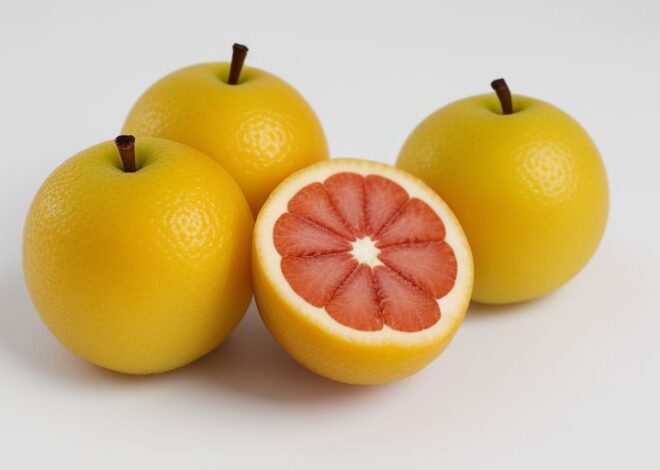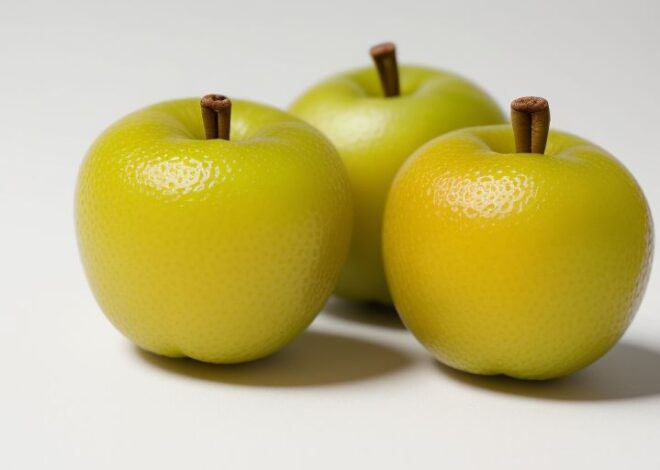
Orange
Introduction
The orange is a hybrid citrus fruit that is widely cultivated and consumed around the world. It is a small, round or oval-shaped fruit with a thick, easy-to-peel skin and juicy, sweet-tart pulp. Oranges are an excellent source of vitamin C, flavonoids, and fiber, making them a nutritious and popular snack.
Etymology
The word “orange” is derived from the Old English word “norange,” which referred to the fruit’s orange color. The term “orange” was later adopted into Middle English from the Old French word “orange,” which was derived from the Latin word “aurantius,” meaning “golden.”
Description
Oranges are a type of hesperidium, a fruit with a leathery rind and juicy pulp. They are usually round or oval in shape, with a diameter of 2-3 inches (5-7.5 cm). The skin is thick and easy to peel, with a vibrant orange color that ranges from deep yellow to reddish-orange. The pulp is divided into segments, or “wedges,” which are juicy and sweet-tart in flavor.
Taxonomy and Cultivars
Oranges are classified as a hybrid of the pomelo (Citrus maxima) and the tangerine (Citrus reticulata). There are many cultivars of oranges, including:
| Cultivar | Description |
|---|---|
| Valencia | Juicy and sweet, with a thin skin, often used for juice production |
| Navels | Seedless and sweet, with a thick, easy-to-peel skin |
| Blood oranges | Deep red or reddish-purple flesh, with a sweet-tart flavor |
| Cara Cara | Pink or red flesh, with a sweet and tangy flavor |
Distribution and Habitat
Oranges are native to Southeast Asia and are now cultivated in many tropical and subtropical regions around the world. They prefer well-drained soil and full sun to partial shade, with an ideal temperature range of 64-90°F (18-32°C).
Cultivation
Oranges are typically grown from seed or grafted onto a rootstock. They require regular watering, fertilization, and pruning to maintain their shape and promote fruiting.
Production and Uses
Oranges are one of the most widely produced and consumed fruits in the world. They are eaten fresh, juiced, or used in cooking and baking. Orange juice is a popular beverage, and orange zest is used as a flavoring in many recipes.
Phytochemistry
Oranges contain a range of phytochemicals, including:
| Compound | Description |
|---|---|
| Vitamin C | Antioxidant and immune system booster |
| Flavonoids | Antioxidant and anti-inflammatory properties |
| Fiber | Supports digestive health |
Flavor
Oranges have a sweet-tart flavor, with a range of flavors depending on the cultivar. They are often described as juicy, sweet, and refreshing.
Toxicity
Oranges are generally safe to eat, but may cause allergic reactions in some individuals. The peel and seeds contain compounds that can be toxic if ingested in large quantities.
Nutrition
Oranges are a nutrient-rich food, providing:
| Nutrient | Amount per 100g |
|---|---|
| Vitamin C | 53.2mg |
| Fiber | 2.9g |
| Potassium | 181mg |
Culture
Oranges have played a significant role in many cultures around the world. In ancient China, oranges were considered a symbol of good fortune and prosperity. In Europe, oranges were a luxury fruit, often given as gifts to royalty and nobility.
“When life gives you oranges, make orange juice.” – Unknown
In conclusion, oranges are a delicious, nutritious, and versatile fruit that have been enjoyed for centuries. From their vibrant orange color to their sweet-tart flavor, oranges are a true delight. Whether eaten fresh, juiced, or used in cooking, oranges are a fruit that brings joy and nourishment to people around the world.


